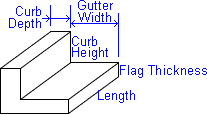Once you’ve established a basic understanding of a simple concrete mix you can begin to find out more about new concrete technologies and the true limitations of this unbelievable building material hint, there aren’t many. By altering the volume and variety of aggregates that you use in your cement mix you can produce many different types of concrete suited to different applications. Generally the objective of substituting aggregates is to get the concrete remain consistently strong as a finished product. Some examples of concrete advanced techniques are. Even all these options are merely the tip of the iceberg for what concrete is capable of. The extreme limitations of current concrete technology being investigated and developed are transparent concrete that will show a silhouette through concrete that is meters thick. Limitations of concrete power are self supporting concrete that does not require the mechanical assistance of metal grid work. Go to the following website, if you are hunting for additional information concerning ready mixed concrete nottingham.

Concrete strength used to be quantified is the current unit of compressive concrete power referring to the amount of force the concrete can ensure before failure.You can add liquid or powder pigments to your concrete to achieve interesting and lively colors. Common colors would be brown, red, dark grey, tan and other comparable earth tones. To get more vibrant concrete colors you can use pure white cement in place of regular cement, as well as pure white sand instead of regular sand. This white mortar mix will respond well to more vibrant colours and pigments. The quantity of pigment or dye that you use depends entirely on the brand that you select. The best way is to purchase from a specialty concrete supply store which will have a much better selection of quality concrete colour additives compared to the local hardware supply store.You can replace all or part of the sand in mortar mix with aggregate materials that are much lighter in character than sand. The outcome will be a concrete that’s much lighter, but also vastly weaker than a sand mortar.
There are a number of applications for lightweight concrete with many of them being decorative like planter pots or garden statues. The most usual lightweight aggregate material substitutions for making concrete. Vermiculite that is a mineral and frequently sold as pool base in larger quantities from pool shops which can make a relatively solid, but compressible concrete. The insulation value of vermiculite is very high, over ten times as large as sand, so vermiculite concrete mixes are usually used for noise dampening and insulating. Using peat partially in place of sand will lead to a concrete that’s a lot poorer than traditional mortar and even much weaker than vermiculite concrete. The feel of the concrete is somewhat earthy and finishing and detailed work can be slightly difficult compared with other mixes. This is another readily available and cheap aggregate substitutions used to achieve a lightweight concrete. In addition to providing a demanding and inconsistent texture to the concrete, the wood ingrained will frequently stain and discolour producing an interesting and unique pattern. Too much sawdust can make the concrete unacceptably weak very quickly more so than vermiculite and peat moss.


